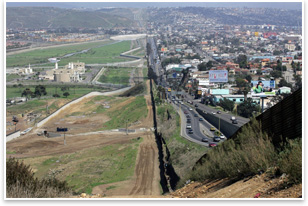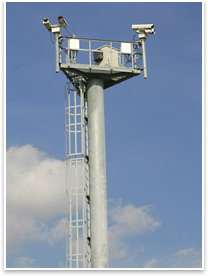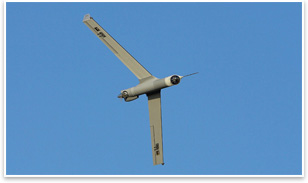
Can You Really Build a 700-Mile-Long Fence? by Russell Boniface
A critical component of the initiative is SBInet, a three-year initiative led by Aerospace giant Boeing that focuses on increased technology and infrastructure. A model of the SBInet initiative will be deployed at the Southwest border during the next eight months, where the strategy will ultimately focus. SBInet was conceived eventually to support 6,000 miles of “border security awareness,” and that first eight-month phase will cover 28 miles of border near Tucson. DHS currently is implementing $500 million for additional infrastructure along borders that, in addition to construction of new fences and barriers, includes:
Infrastructure enhancement is already under way in other areas, including a 14-mile border infrastructure system in San Diego. Building a virtual fence
"Being selected to support customs and border protection as they secure our nation's borders is a testament to the strength of our team and the expertise, talent, and focus that we bring to this task," said George Muellner, president of Boeing Advanced Systems for Boeing Integrated Defense Systems. "Our team is absolutely committed to making SBInet a success, and we are ready to respond immediately to our customer in the detailed design and deployment of this critical solution to enhance our nation's border security system." |
||
Copyright 2006 The American Institute of Architects. All rights reserved. Home Page |
||
news headlines
practice
business
design
recent related
› GSA Honors Its “Best of the Best” (U.S. and Canada Shared Border Station)”
› Architectural Efforts to Bring Safety and Stability to Iraq
Boeing’s team members include systems integrator Unisys Corp., as well as Merrimack, N.H.-based surveillance technology firm Kollsman Inc., a U.S. subsidiary of Elbit Systems Ltd. of Haifa, Israel.
In June, the New York Times asked selected architects to “devise
a fence between the U.S. and Mexico.” View the entries.
(For free access to this article and more, you must be a registered member
of the New York Times.)

 Summary:
Summary: Expanding roads and lighting
Expanding roads and lighting “DHS Secretary Michael Chertoff points out that the border is a mix of different kinds of environments, ranging from urban areas to very remote and desolate rural areas or wilderness areas, where there's more distance to be covered. “SBInet, as a critical element, has been designed to be a flexible tool. It is not a cookie-cutter approach. We want to detect intrusions. We want to be able to know when anybody or anything is crossing that border … the technology has to allow us to characterize in an efficient fashion and cull out those intrusions that we don't care about.”
“DHS Secretary Michael Chertoff points out that the border is a mix of different kinds of environments, ranging from urban areas to very remote and desolate rural areas or wilderness areas, where there's more distance to be covered. “SBInet, as a critical element, has been designed to be a flexible tool. It is not a cookie-cutter approach. We want to detect intrusions. We want to be able to know when anybody or anything is crossing that border … the technology has to allow us to characterize in an efficient fashion and cull out those intrusions that we don't care about.”